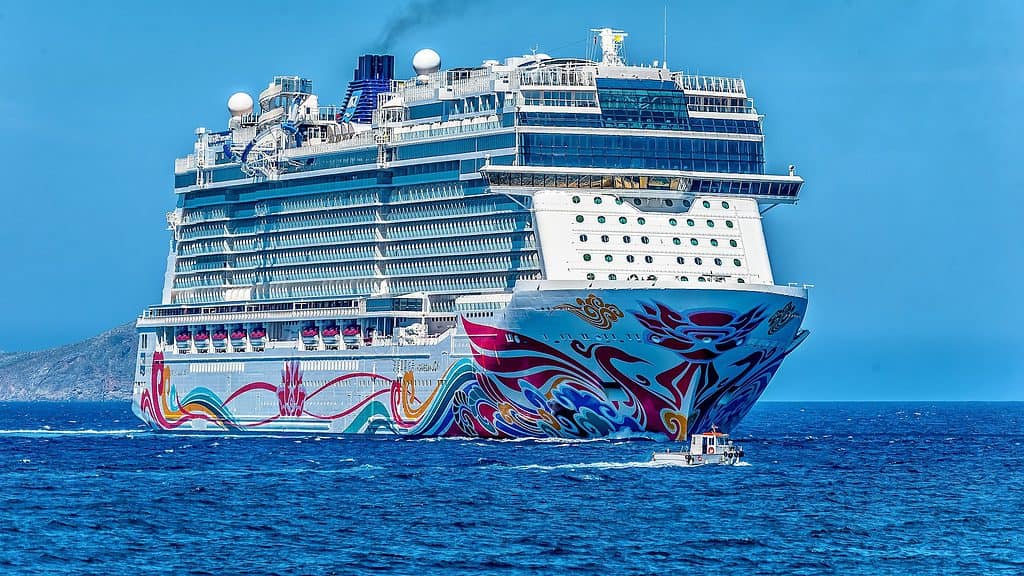Marine organisms tend to attach and settle on submerged surfaces such as vessel hulls. These organisms often cause increased friction or drag when the vessel moves through the water, resulting in higher fuel consumption. This phenomenon is called fouling — and in order to prevent it, antifouling paints with biocides, typically copper, are applied to vessel hulls (this includes both ships and recreational vessels).
But we can do better.

Antifouling paints and coating are applied to ship and boat hulls as a means to deter fouling organisms. However, the widely used copper-based antifouling paints are harmful to marine plants and animals. They release copper and other heavy toxic metals directly into the sea. For instance, a study published in September 2022 reveals that 40% of the copper pollution in the Baltic sea region comes from antifouling paints applied on ships and boats.
Recently, a team of researchers from Chalmers University of Technology (CTH) in Sweden has proposed a solution to this serious environmental problem. They examined both copper-based and silicone-based antifouling coatings on static panels and discovered that the latter could drastically reduce heavy metal toxicity in marine habitats.
The first author of the study and researcher at CTH, Maria Lagerström told ZME Science:
“If more vessels had silicone foul-release coatings on their hulls instead of traditional coatings in the Baltic Sea region, it would result in lower emissions of potentially harmful biocides to the marine environment. The Baltic Sea is classified as a Particularly Sensitive Sea Area (PSSA) by the International Maritime Organization. Reducing the input of hazardous substances into the Baltic Sea would help to improve the ecosystem health of this inland sea.”
Of course, having access to an eco-friendly coating would be beneficial all around the world, not just in one sea. So what could be done about it?
Why silicone-based antifouling coatings are better
Traditional copper-based coatings have been used for a long time and have dominated the market historically. Both the shipping industry and the leisure boat sector use copper paints on a large scale. For instance, the antifouling paint and coating market is currently worth over $8 billion and it is expected to become a $12.6 billion industry by 2027.
Although silicone-based coatings have been available in the market for a while now, their usage raised from one percent in 2009 to only 10% in 2014. The researchers argue that people have become so used to copper-based products, that they are often skeptical as to whether non-toxic alternative solutions really work as well.
However, the truth is that traditional antifouling paints inhibit fouling by continuously leaching copper and other toxic substances that are poisonous to marine organisms. Basically, they keep away marine organisms from the hull by poisoning them. For a silicone-based paint, it is instead its smooth surface properties that make it difficult for fouling to stick to the hull.
Unlike conventional coatings, they are typically biocide-free or contain much lower amounts of biocides compared to traditional antifouling coatings. So no heavy metals are released into the sea in the case of silicone-based paints. They are also self-cleaning, which means that any fouling that has managed to stick is removed as the hull moves through the water. This is why they are also referred to as “foul-release” coatings.
“(Moreover), silicone coatings are not meant to wear, as opposed to traditional copper coatings which, on the other hand, are typically intentionally designed to polish off over the course of the product’s lifetime,” said Lagerström.
Silicone-based coatings are better but not perfect
It must be noted that the researchers tested the efficacy of the coatings on static panels, and not on actual vessels yet. During the tests, the silicone coating performed similarly or even better than the copper coatings under static conditions. They suggest that since the foul-release coatings have self-cleaning properties, it is possible that these coatings would have performed even better if they had subjected the panels to motion.

A limitation of this research work is that Lagerström and her team only tested these coatings in the Baltic Sea region which is why they withhold from drawing any conclusions about the efficacy of silicone coatings in other seas across the globe. Other seas could have a slightly different chemistry which could react differently to the coating — perhaps even better, but you can’t know for sure until you test it. Plus, they only tested one silicone foul-release product that was available on the market to recreational boaters at the time of the study.
Many new products have since been launched so the current study can not be considered to validate their effectiveness. Moreover, since silicone is also a non-biodegradable substance, it might also have some detrimental effects on our water bodies or the environment in the long run. When we asked this question to Lagerström, she told ZME Science it’s a very complex problem.
“The toxicity and bioaccumulation potential of pure PDMS (polydimethylsiloxane, which is the backbone of silicone coatings) has been reported as low. So the issue of silicone potentially being released into the environment is therefore maybe not a concern from a toxicity point of view, but any release of persistent (non-degradable substances) into the environment would be far from ideal and we would not consider that a sustainable solution in the long-term.”
Unfortunately, there have not been any studies on the long-term degradation of silicone coatings so it’s difficult to confirm anything on the matter at present. However, for silicone foul-release coatings, the authors stipulate that it is not the release of the main silicone component (the PDMS) that is of immediate concern, but rather that of silicone oils that may be present in the coatings.
In their review, they found that such oils may be added to products. As these are not bound in the coating, they can be released into the marine environment. However, neither the extent nor the chemical identity of such additives is currently known for available coatings as manufacturers are not obliged to disclose this information.
Therefore, the researchers believe that further research and increased transparency is needed to detect, limit or avoid the release of such compounds.
The study is published in the journal Marine Pollution Bulletin.